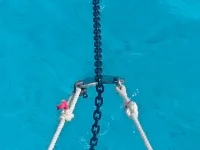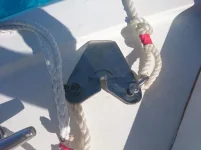stimmy
Active member
- Joined
- Oct 6, 2016
- Messages
- 56
- Status
- OWNER - I own a Hatteras Yacht
- Hatteras Model
- 65' CONV -Series I (1986 - 1998)
I closed on my 1990 65 enclosed bridge and am adding a life raft. It is a 10 person round canister and weighs about 200 lbs.
Is it reasonable to put it on the flybridge roof? The bow is cluttered enough with a davit and tender.
Is the bridge roof structurally strong enough and would the extra weight so high affect stability?
Everyone on this site has more experience on Hatteras than I do, but I hope to learn.
Is it reasonable to put it on the flybridge roof? The bow is cluttered enough with a davit and tender.
Is the bridge roof structurally strong enough and would the extra weight so high affect stability?
Everyone on this site has more experience on Hatteras than I do, but I hope to learn.



